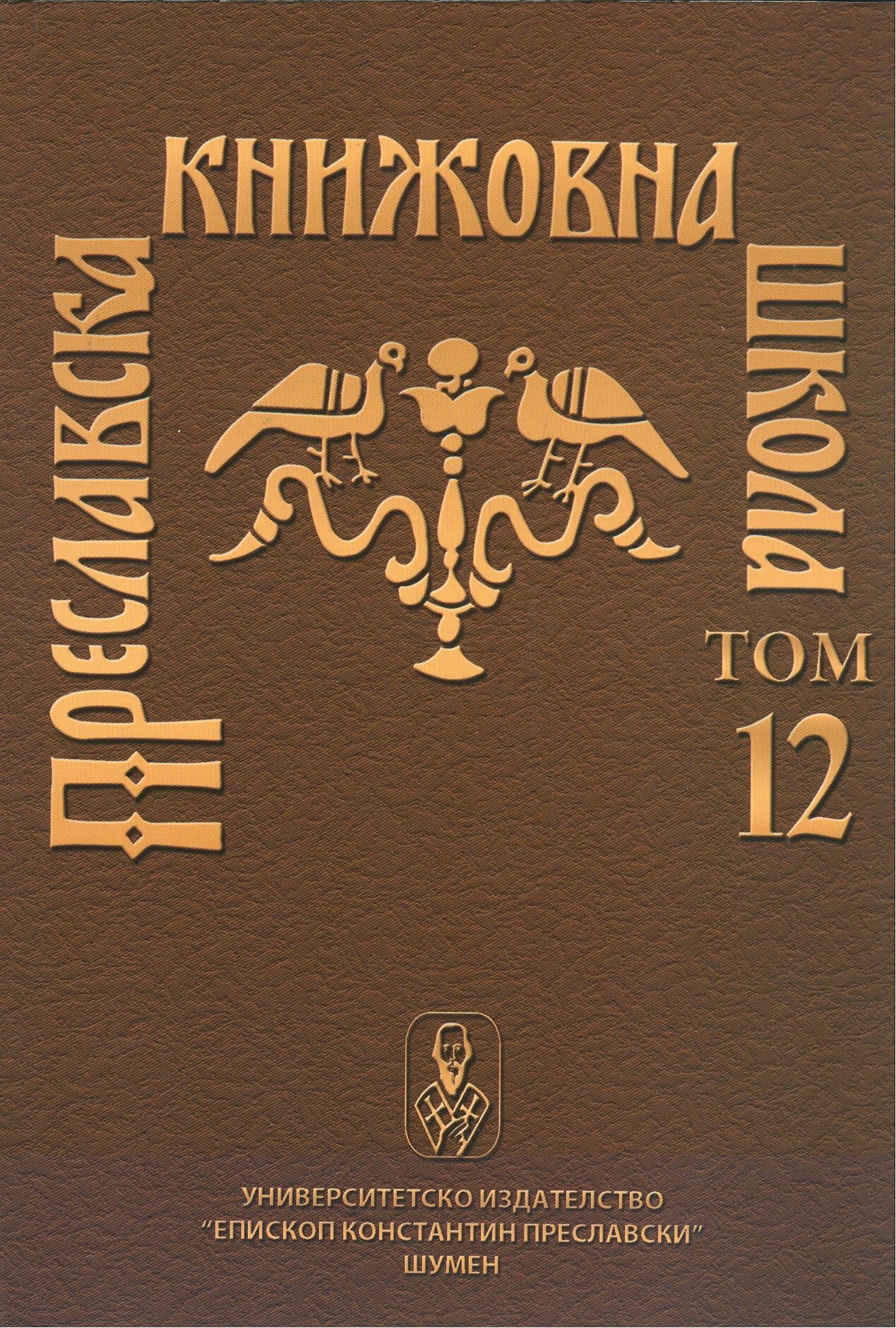СЛУЖБАТА ЗА АПОСТОЛ АНДРЕЙ И ПОГРЕБАЛНИЯТ ЧИН
THE AUTHORSHIP OF ST. NAUM, AND THE DEAD OFFICIA
Author(s): Pirinka PenkovaSubject(s): Language studies, Language and Literature Studies, Studies of Literature, Bulgarian Literature, Eastern Slavic Languages, Philology
Published by: Шуменски университет »Епископ Константин Преславски«
Keywords: hymnography; St. Andrew the Apostle’s cannon; Naum of Ohrid
Summary/Abstract: The author comments the assertions re. the place and time for the composition of St. Andrew the Apostle’s cannon, especially such data as the distribution of ⱋ (шч) in to cannons, attributed to Naum, and ⱋ (шч) in other glagolitic manuscripts, like Prag folios, Kiev missal, Euchologium Sinaiticum and Rila glagolitic folios (in the last to manuscripts is used only ⱋ for шч or шт). Based on the parallels between the feasts for apostles and services (mathins) to the dead, comparisons are made between the structure of the Naum’s Canon and some original funeral canons, created by Konstantin of Preslav and Climent. The identity of combination of антифонъ, блаженьнъ and стихъ in the Canon of Confession (and) in Euchologium Sinaiticum and in Prag folios is remarkable, because the troparia, weaved into the μακαρισμοί in Euchologium Sinaiticum, are without known Greek original. The troparia, weaved into the μακαρισμοί in the Dead canon, constitute a Slavonic acrostichon пяния. Samples for the different translations from the Service of Repentance with a Canon to the Dying by Andreas of Creta are given; the two different translations can be traced in the translations of menajon and octoechus. All canons justifies the hypothesis, that the liturgical tradition in Moravia included canons for the dead, not only simple prayers, included in the mathins. The registered glagolitic Prefacia to St. Andrew the Apostle is reason to believe, that after it should follow a translated canon, created by John the Monk, as in the Greek tradition, or the Naum Canon The evidence of the Dead officia leads to the hypothesis, that in the Naums living time there were to different services for the dead: one acc. to the preserved west liturgical tradition in Acvilea and Moravia, and one revised acc. to the Greek praxis in Bulgaria.
Journal: Преславска книжовна школа
- Issue Year: 2012
- Issue No: 12
- Page Range: 11-36
- Page Count: 26
- Language: Bulgarian

